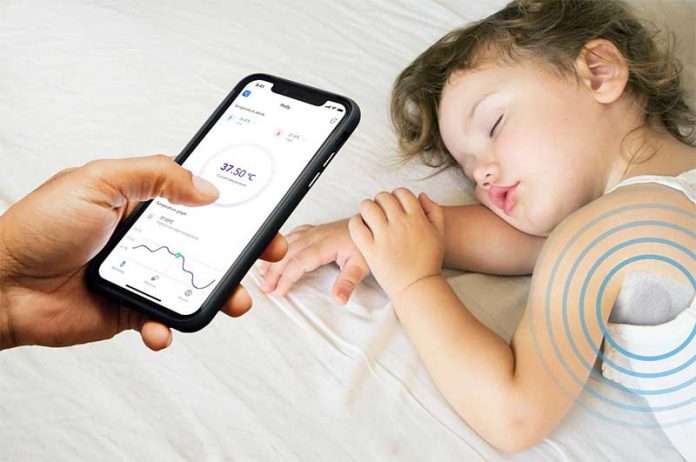Whether at home, school or workplace, a temperature check using a simple thermometer provides a quick diagnosis of an illness, and could help introduce preventive measures to reduce spread of viral infections. However, many homes and even frontline workers, especially in under-resourced areas, do not have access to this simple medical device.
To address this issue, a team led by researchers at the University of Washington in the United States have now created an app called FeverPhone, which transforms smartphones into thermometers without adding new hardware. Instead, it uses the phone’s touchscreen and repurposes the existing battery temperature sensors to gather data that a machine learning app model then uses to estimate people’s core body temperatures.
When the researchers tested FeverPhone on patients in an emergency department, the app estimated core body temperatures with accuracy comparable to some consumer thermometers. The new app could allow people to share their fever results with public health agencies within minutes of being diagnosed by their smartphones, helping healthcare professionals to intervene faster and more efficiently.
Clinical-grade thermometers use tiny sensors known as thermistors to estimate body temperature. Off-the-shelf smartphones also have thermistors that are mainly used to measure the temperature of the battery. The researchers behind the app realized that they could repurpose these thermistors to track heat transfer between a person and a phone. The phone touchscreen senses skin-to-phone contact, and the thermistors then gauge the air temperature and the rise in heat when the phone touches a body.
To test this idea, the team started by gathering data in a lab. To simulate a warm forehead, the researchers heated a plastic bag of water in low temperature and pressed phone screens against the bag. To account for variations in circumstances, such as different people using different phones, the researchers tested three phone models. They also added accessories such as a screen protector and a case and changed the pressure on the phone.
The researchers used the data from different test cases to train a machine learning model that used the complex interactions to estimate body temperature. Since the sensors are supposed to gauge the phone’s battery heat, the app tracks how quickly the phone heats up and then uses the touchscreen data to account for how much of that comes from a person touching it. As they added more test cases, the researchers were able to calibrate the model to account for the variations in things such as phone accessories.
The researchers then took FeverPhone to the university hospital’s Emergency Department for a clinical trial where they compared its temperature estimates against an oral thermometer reading. They recruited 37 participants, 16 of whom had at least a mild fever.
To use FeverPhone, the participants held the phones like point-and-shoot cameras — with forefingers and thumbs touching the corner edges to reduce heat from the hands being sensed. Then participants pressed the touchscreen against their foreheads for about 90 seconds, which the researchers found to be the ideal time to sense body heat transferring to the phone. Overall, FeverPhone estimated patient core body temperatures with an average error of about 0.23 degrees Celsius, which is within the clinically acceptable range of 0.5 C.
The researchers have highlighted a few limitations to their study and areas for further investigation, including that the study did not have participants with severe fevers above 101.5 F (38.6 C), because these temperatures are easy to diagnose and because sweaty skin tends to confound other skin-contact thermometers. Also, FeverPhone was tested on only three phone models; training it to run on other smartphones, as well as devices such as smartwatches, would increase its potential for public health applications.
Elaborating on their app, the researchers said, “We started with smartphones since they’re ubiquitous and easy to get data from. But we are now working on seeing if we can get a similar signal with a smartwatch. That would be nice, because watches are much smaller and their temperature will change more quickly. So you could imagine having a user put a wearable device such as FitBit to their forehead and measure in 10 seconds whether they have a fever or not.”

















